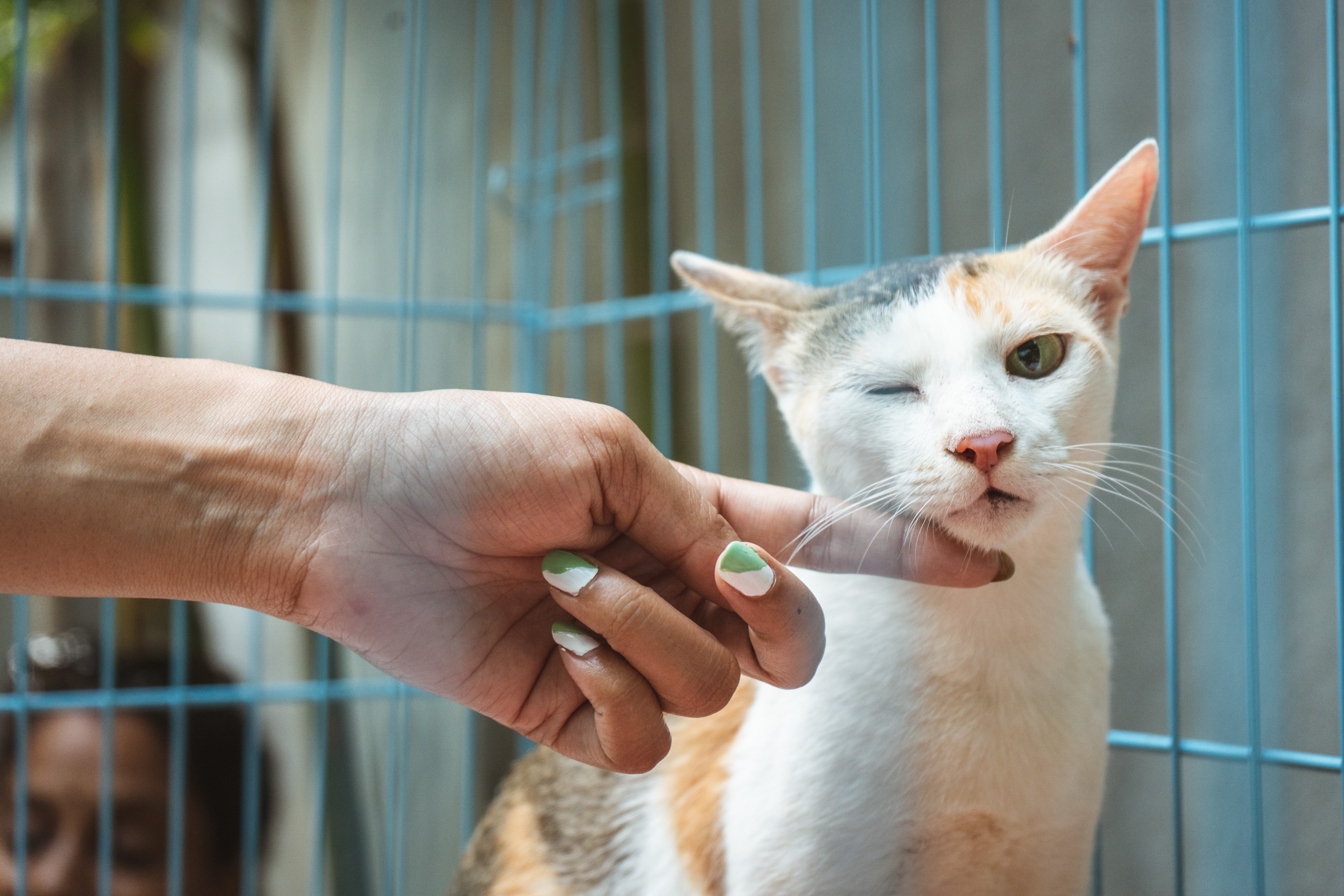A common question people ask when buying pet insurance is what is a pre-existing condition for pet insurance. Buying pet insurance is a lot like buying life, health, or car insurance for yourself. There are a number of considerations that insurance providers make to determine how much your insurance premiums will be. The more pre-existing conditions your car or you have, the higher premiums will be.
The same is true for pre-existing conditions for pet insurance. It isn’t uncommon for pet insurance providers to decline coverage for specific pre-existing conditions to a pet owner. The policy for pet health insurance usually varies between providers and explains what diagnoses, treatments, and conditions it covers – and which it doesn’t.
This article will take a closer look at what pre-existing conditions are for pet insurance, why they are important, and what your options are to keep your pet safe.
What are pre-existing conditions for pet insurance?

According to insurance providers, the pre-existing condition includes any kind of health issues, major injuries, or adverse medical history reviews that your pet developed before you’re in the waiting period. If your pet has a pre-existing condition, it doesn’t mean that you won’t be able to obtain a pet insurance policy.
Instead, it may either mean higher premiums or that your plan won’t cover the costs of these pre-existing conditions. If there are incurable pre-existing conditions, the plan will take the costs that could directly relate to recovery because of said diseases when deciding on the premiums.
Since the idea of pet insurance is to reduce vet care costs, you should carefully consider how much insurance premiums you are willing to pay before the venture doesn’t remain cost-effective anymore. Some of the best pet insurance providers don’t take pets with pre-existing conditions for this very reason.
Common pre-existing conditions
Generally, if you look at what are pre-existing conditions for pet insurance for different providers, you may find at least the following conditions:
- Diabetes
- Cancer
- Heart disease
- Urinary tract infections
- Hip dysplasia
- Ear infections
- Respiratory infections
- Arthritis
- Epilepsies
- Severe allergies
- Major injuries
- Other incurable pre-existing medical conditions
There are two types of pre-existing conditions that a pet owner has to report.
Temporary pre-existing conditions

As per pet insurance companies, if your pet has a pre-existing condition that used to be present but has no impact on its activities or health in the present, it is considered a temporary pre-existing condition. These are pre-existing conditions that are not present anymore, such as a past respiratory infection or a broken bone.
Permanent pre-existing conditions
Pet owners need to report any condition that the pet may be facing at the time of starting the policy – and the waiting period. These could be life-long issues that may return at any time because of the changes in environmental conditions, diet, or more. A prime example of this include lung issues, diabetes, and more.
What happens if my pet has a pre-existing condition?

Generally, pet insurance plans cover almost every condition, provided it occurs after activating the policy. For example, if your pet develops cancer, diabetes, or a respiratory condition after you have acquired the policy, it will be covered.
If, however, there are pre-existing conditions when you are looking to obtain pet insurance, most pet insurance companies will not cover pre-existing conditions. However, it will not prevent you from getting an insurance policy. Insurance companies will either give you a plan with heightened premiums, or they may not cover costs associated with pre-existing conditions.
Determining pet’s pre-existing conditions
Almost every insurance company first looks at your pet’s medical record before accepting any case. The pet health insurance company first considers if there are any signs of any illnesses at the time of policy waiting periods. These illnesses would be considered pre-existing conditions. Pet insurance providers also consider the past vet bills to determine the type of care you choose, the pet’s condition in general, and any medical history reviews.
Determining factors
Your pet’s breed, gender, age, and pet parents’ health also play a crucial role in determining the premiums and identifying what the pet develops in the future. For example, pugs are known to develop hernias and cancers, while Siamese cats may often develop asthma. These aren’t classified as pre-existing conditions and will therefore be covered if the illness does not exist at the time of the policy.
It is important to note that you can plead your case with a different pet insurance plan. In many cases, even if they decline coverage for pre-existing conditions, pet insurance companies often have good relations with veterinary care providers. They can help you get on a veterinary discount plan if needed. These plans are particularly helpful if you have multiple pets with different medical conditions.
Pet insurance policies for pre-existing conditions

Recently, the question of what pre-existing conditions are for pet insurance has increased considerably. This is because most veterinarians are offering more technologically advanced techniques and medicine. As a result, the cost of surgery, hip dysplasia recovery, chemotherapy, and other services are getting more expensive – albeit more effective.
A review in numbers
Almost 69 million households (over 90.6 million families) in the US own at least one pet, with dogs being among the most common types of pets in the suburbs as well as in urban settings. The number of pet parents is also rapidly increasing as a result. Dogs are followed by cats and freshwater fish, with 45.3 million and 11.8 million owners, respectively.
According to surveys conducted by pet insurance providers, roughly 14.75% of households have more than one dog, and 13.01% are looking to buy in the near or far future. As the number of pets increases, so will the need for pet insurance.
What does this mean?
The increasing costs of veterinary care, more people becoming pet owners, the prevalence of curable pre-existing conditions, and the overall increase in the number of visits to pet care facilities mean a higher demand for pet insurance policies.
According to NAPHIA (North American Pet Health Insurance Association), the average annual insurance premium is increasing every year. In 2018, it was roughly $556 for dogs, which increased to $600 by 2020. According to the American Veterinary Medical Association (AVMA), the vet bills coverage and premiums vary with respect to the provider and how they cover pre-existing conditions.
Most common pre-existing condition claims

According to NAPHIA and AVMA, the most common disease in dogs, cats, goats, cows, birds, and hamsters include:
- Urinary tract infections
- Ear infections
- Gastroenteritis
- Diarrhea or constipation (associated with pain)
- Skin conditions
- Arthritis
- Allergies
- Heart disease
- Constant vomiting
- Eye infections and other conditions
- Cancers
- Geriatric conditions
Many of these conditions may qualify as pre-existing conditions, depending on the timing of when you choose to get your pet’s pet insurance coverage started.
Dealing with a pet’s pre-existing conditions

As mentioned above, the frequency of health problems in pets seems to be actively increasing. It is imperative that you find an insurance policy that meets your needs as quickly as possible. Many pet owners aren’t sure of when the best time is to get in touch with insurance companies to avoid declaring a pre-existing condition.
Remember, not only is waiting for an expensive and risky venture, but there is also a chance that you may have to pay fines if it was later revealed that you hid something from the providers. Many insurance companies don’t insure a pet’s pre-existing condition. As a pet owner, you have several options once rejected by one pet insurance company.
- Try out other insurance providers.
- Ask a veterinary care provider for discount plans.
- Ask a veterinarian to request an insurance company because of your unique circumstances. This may include suggesting that the present issue is a temporary condition and that it shall not have such a major impact in the future.
It is important to note that human insurance companies such as car insurance providers or human medical or life insurance companies are not allowed to discriminate between clients based on their pre-existing conditions. As far as pets are concerned, though, there are no regulations suggesting that pet insurance companies can or cannot adopt such practices.
This means that insurance companies are at full liberty to discriminate between pets (and their owners) who have a pre-existing condition when it comes to offering them a piece of the pie.

chance that if you plead your case, some organizations may be willing to give you a pet insurance policy. Pet Assure, for instance, offers pet insurance plans even if there are pre-existing conditions.
But is the higher cost worth it?
Generally, it is never a good idea to wait when it comes to health insurance plans – for yourself or your pet. You never know when you may need it. However, even if you are currently focused on treating disease(s) that may be considered pre-existing conditions (which won’t be covered by the pet insurance policy), coverage could still be worth the cost.
For example, a pug who has hip dysplasia (a pre-existing condition) can still develop respiratory infections, urinary infections, heart disease, or cancer. Getting your pug insured now would have been much more beneficial in this case than waiting for the pre-existing condition to go away.
Furthermore, routine care visits may also end up costing quite a lot. From antibiotics to vaccinations, antifungal medications, hospitalization, diagnostic checks, and more could be quite taxing and can add up fairly quickly.
There is no doubt that pet insurance can be the saving grace you need when unexpected costs start adding up. Even if there are pre-existing conditions that won’t be covered or a rise in premiums because of the condition, going for pet health insurance policies may help you tackle the future much more confidently. You always have the option to from different pet insurance companies to find one that is best suited to your needs and your pet’s medical conditions!